A perfectionist’s paradise or what cable management should be
Choosing a good and reliable cable is, of course, not easy, but it is equally important to be able to properly organize all these wires: so that it is not only functional and convenient, but also beautiful. Moreover, some craftsmen were so confused that they even came up with a special term for this - cable porn “cable management”. On Friday, we offer to see how it looks like not just good cable management, but real cable perfectionism.
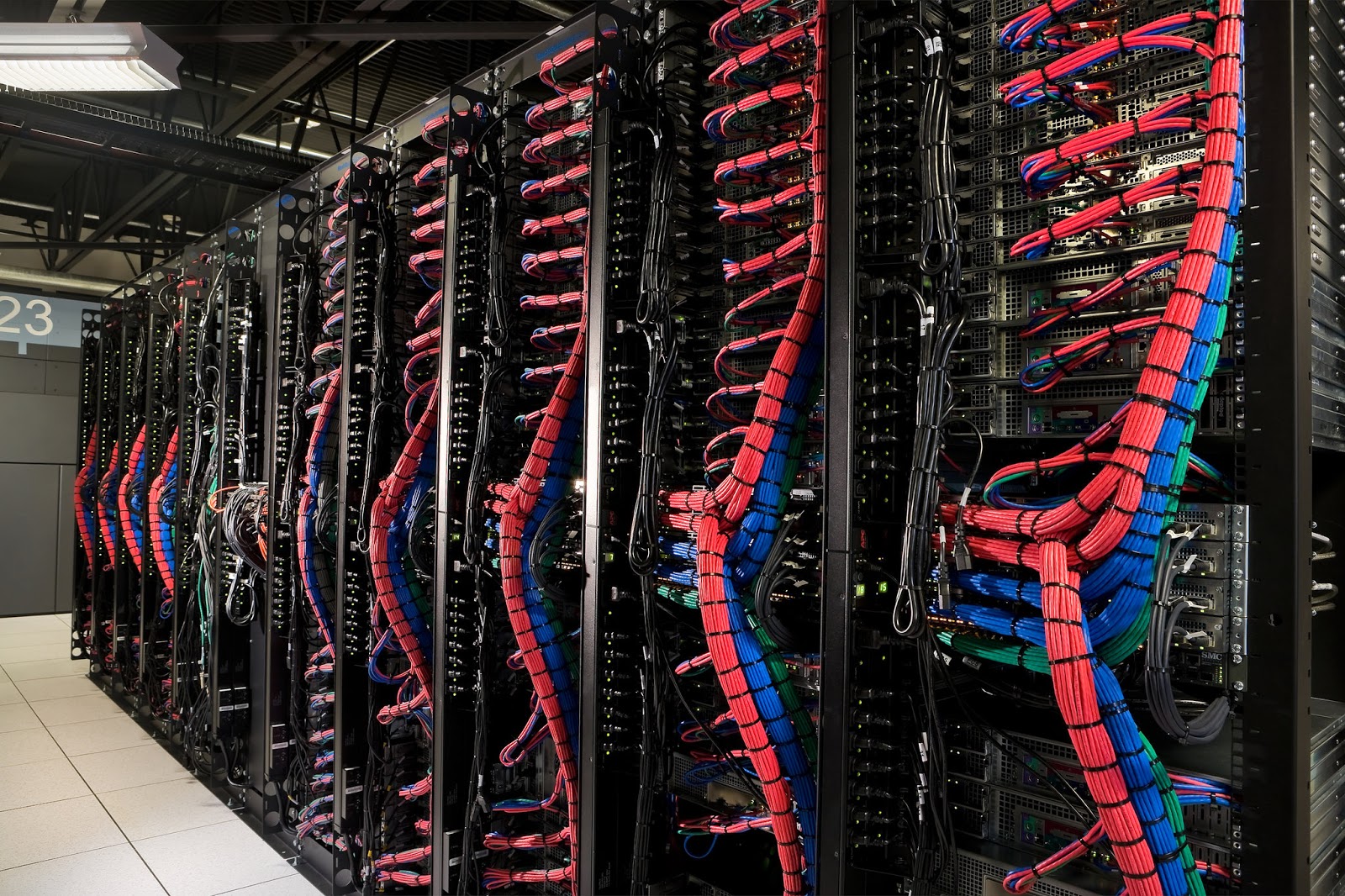
The most obvious cable management tool is the good old time-tested cable ties. But they also have drawbacks: firstly, they are disposable, and secondly, this solution is more suitable for home than for large commercial premises. In data centers, long ago switched to reusable Velcro - they are slightly more expensive, but no less reliable, in addition, you do not need to write them off after one use.
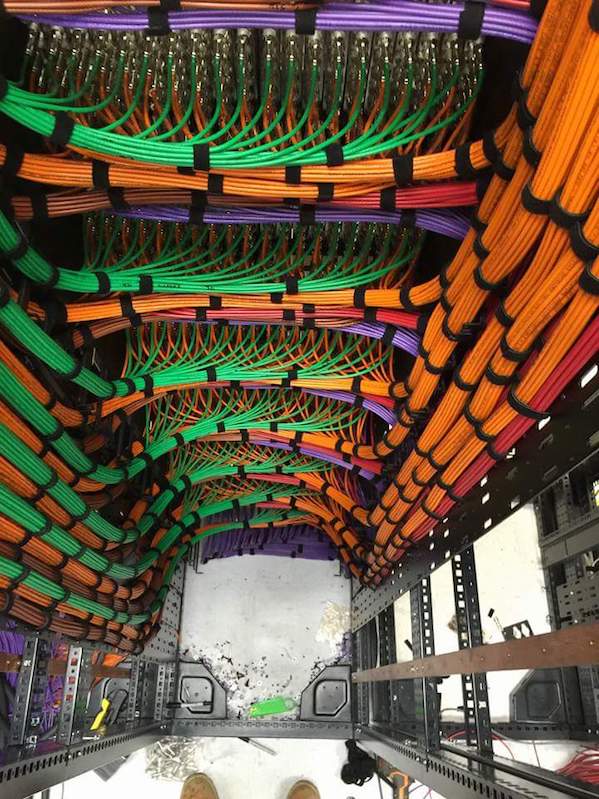

However, sometimes screeds are used, and with their help create the most diverse designs:


To increase the level of aesthetic attractiveness (and sometimes for “color coding”), you can use patch cords of various colors and lengths - if you coordinate them correctly, you can get a well-organized data center.

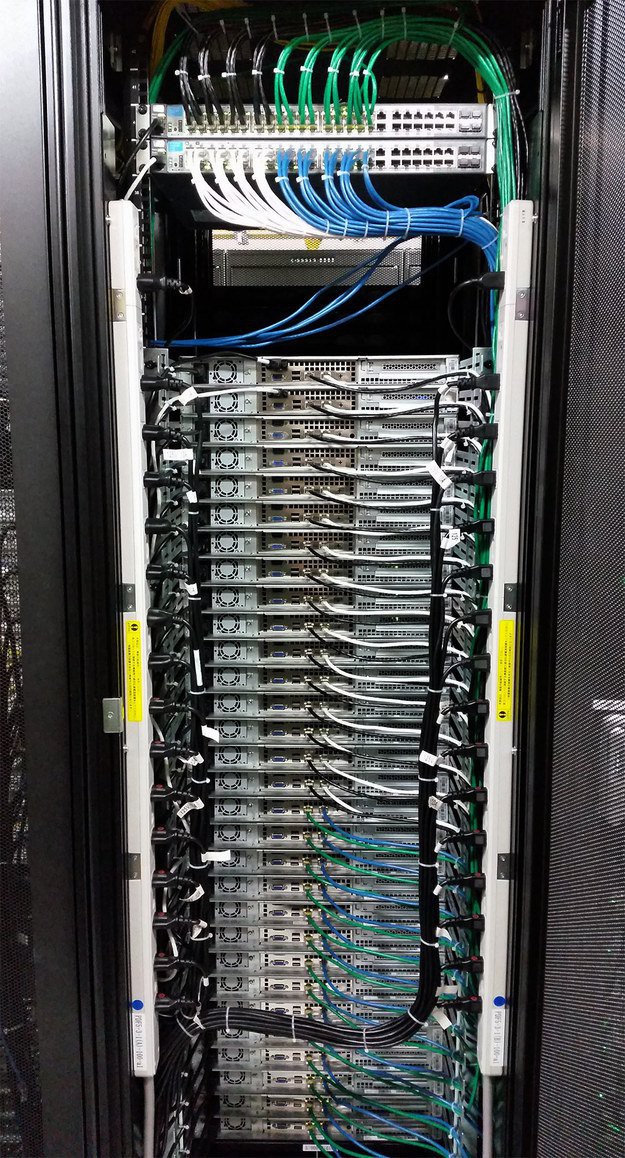
One of the main assistants in cable management is cable channels. There are a lot of varieties now - from plastic and iron to parapet, perforated, flexible, transparent and so on. Perhaps there are even rhinestones.
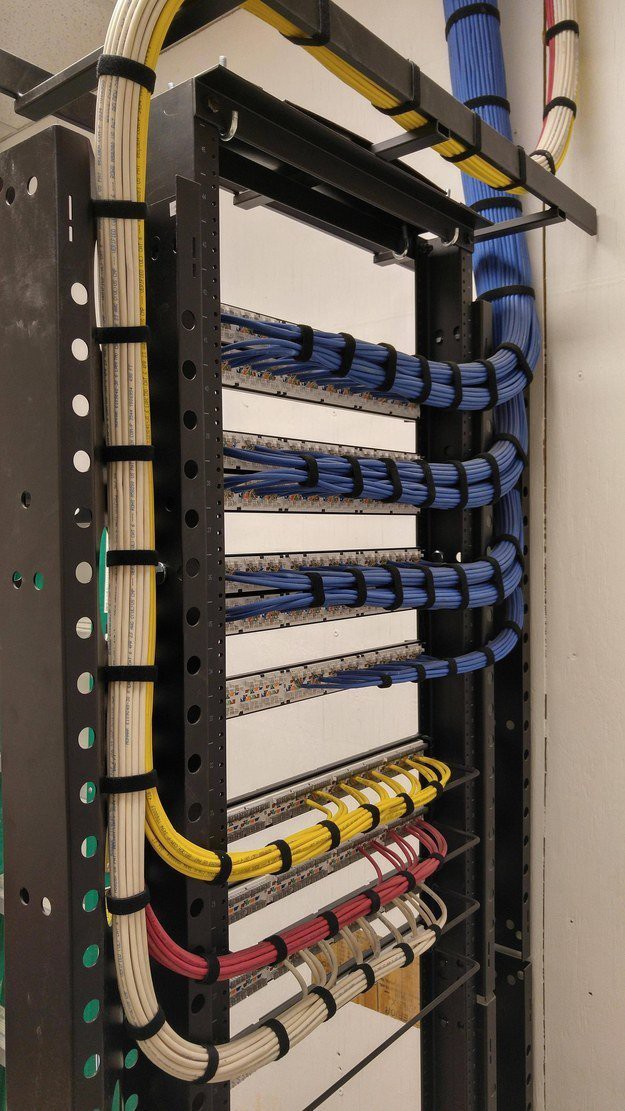


Another important point is cable marking. Even if there are only a couple of things, the lack of marking can play a trick, for example, when changing the employee responsible for feng shui in the server room.
One option is to use a label printer, of which there are so many. Or special shrink materials - the label for marking, as a rule, is made of elastic plastic, and is fixed by heating (this is where the special device helps out).
We are not even talking about scotch tape and markers - the latter is more suitable for a garage or home router than for a large data center.
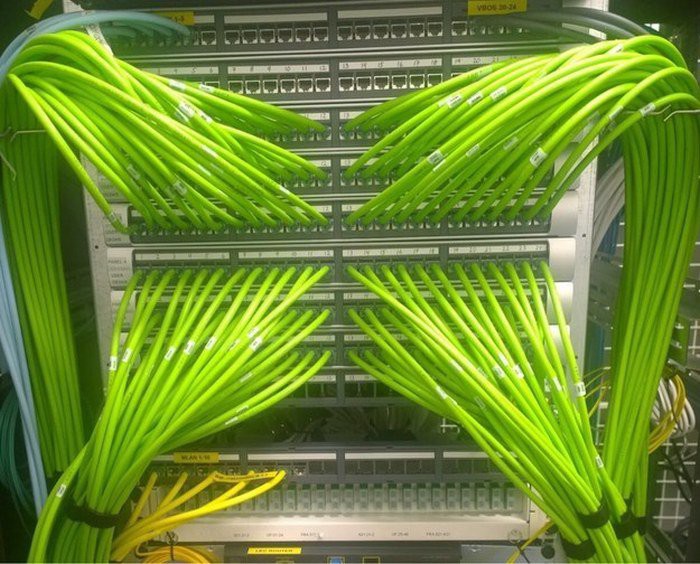

Another common server solution is to place cables and other infrastructure communications under the raised floor.
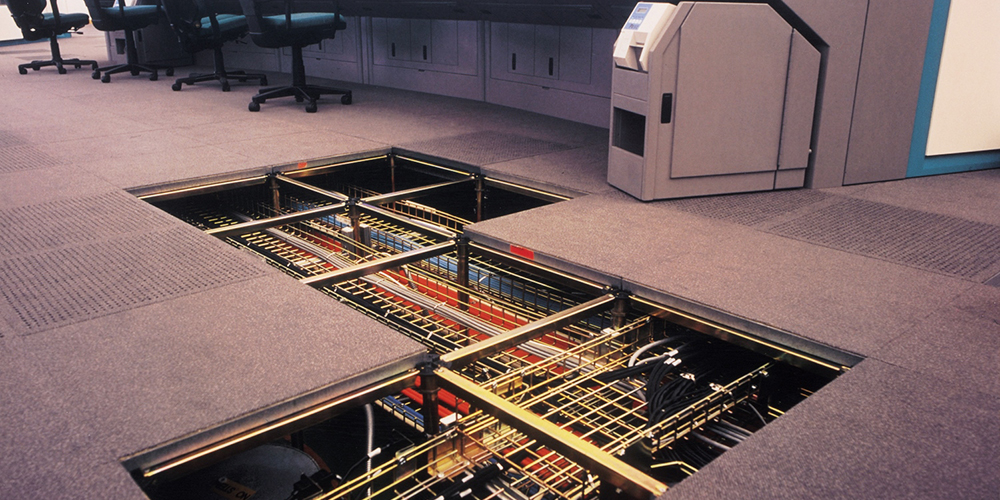
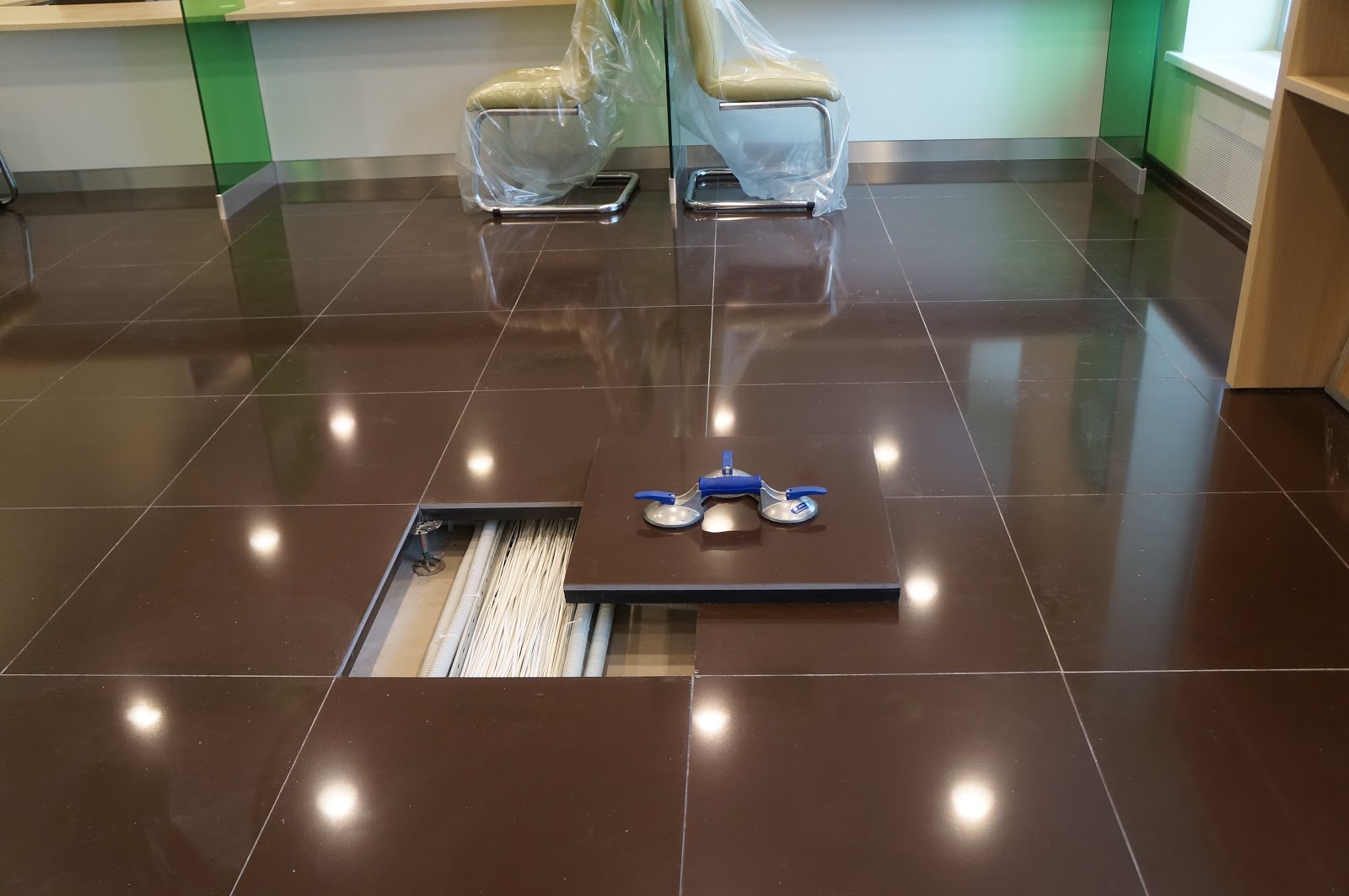
How do you like this decision? Someone sets Hollywood stars like that, while someone puts cables.

Do not forget about the saying "measure seven times, cut one." Sometimes designers do it “by eye”, which is not very professional - if the cable is shorter, you will have to prepare a new one, and if there are thousands of wires, it is not only labor-intensive, but also expensive. Therefore, we are not shy and carefully measure everything or just make a supply - it can always be used.


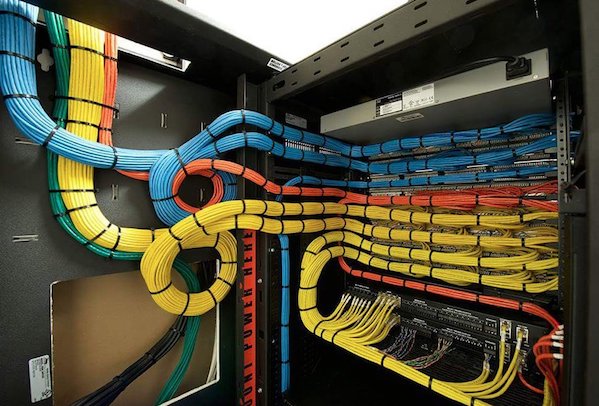
Organizers for patch cords will also not be redundant - both horizontal and vertical.
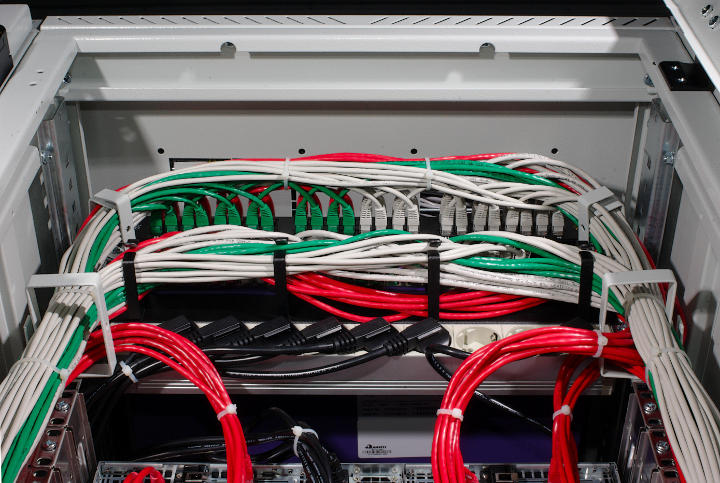

Another way of cable management is to install bundles in cabinets using patch panels (a separate bundle for each panel), secured with the same soft hook and loop fasteners - in any case, you will have to either add or transfer the cable from the bundle, and on plastic ties will be problematic. Yes, and not very safe - if you do not carefully cut the screed, you can get injured.



It will not be superfluous to leave a small supply of cable when entering the cabinet - either in the cabinet itself or outside. For example, 5 meters for optics, for twisted pairs - about 3 meters, unless, of course, the length allows.
This is a very bold masonry:
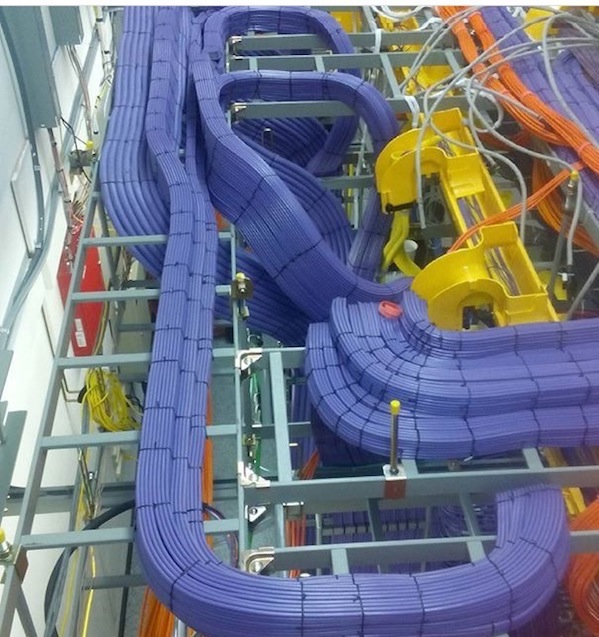
Of course. The scale, of course, is completely different, but the decisions are simpler. For example, such:

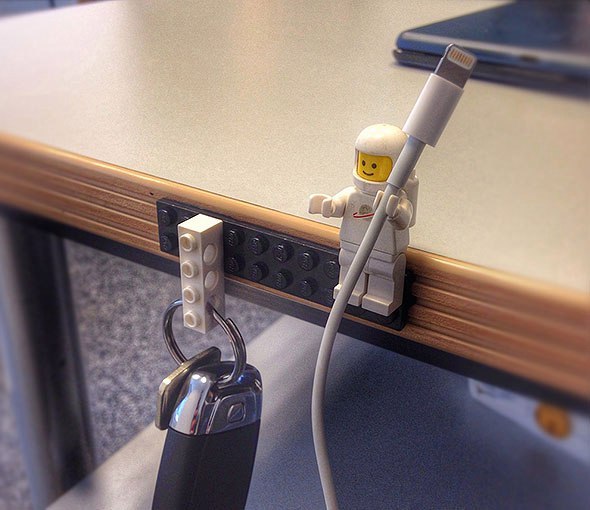
Or hide in a box:


Well, this is a completely different level - not only for enthusiasts, but also for lovers of beauty.
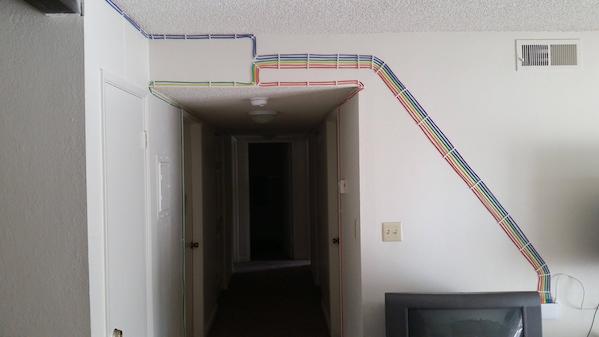

Thank you all for your attention. Drive “cable porn” into any search engine - you will find many more interesting things to cheer you up, and the most interesting can be sent in the comments.
Have a good weekend!

The most obvious cable management tool is the good old time-tested cable ties. But they also have drawbacks: firstly, they are disposable, and secondly, this solution is more suitable for home than for large commercial premises. In data centers, long ago switched to reusable Velcro - they are slightly more expensive, but no less reliable, in addition, you do not need to write them off after one use.


However, sometimes screeds are used, and with their help create the most diverse designs:


To increase the level of aesthetic attractiveness (and sometimes for “color coding”), you can use patch cords of various colors and lengths - if you coordinate them correctly, you can get a well-organized data center.


One of the main assistants in cable management is cable channels. There are a lot of varieties now - from plastic and iron to parapet, perforated, flexible, transparent and so on. Perhaps there are even rhinestones.



Another important point is cable marking. Even if there are only a couple of things, the lack of marking can play a trick, for example, when changing the employee responsible for feng shui in the server room.
One option is to use a label printer, of which there are so many. Or special shrink materials - the label for marking, as a rule, is made of elastic plastic, and is fixed by heating (this is where the special device helps out).
We are not even talking about scotch tape and markers - the latter is more suitable for a garage or home router than for a large data center.


Another common server solution is to place cables and other infrastructure communications under the raised floor.


How do you like this decision? Someone sets Hollywood stars like that, while someone puts cables.

Do not forget about the saying "measure seven times, cut one." Sometimes designers do it “by eye”, which is not very professional - if the cable is shorter, you will have to prepare a new one, and if there are thousands of wires, it is not only labor-intensive, but also expensive. Therefore, we are not shy and carefully measure everything or just make a supply - it can always be used.



Organizers for patch cords will also not be redundant - both horizontal and vertical.


Another way of cable management is to install bundles in cabinets using patch panels (a separate bundle for each panel), secured with the same soft hook and loop fasteners - in any case, you will have to either add or transfer the cable from the bundle, and on plastic ties will be problematic. Yes, and not very safe - if you do not carefully cut the screed, you can get injured.



It will not be superfluous to leave a small supply of cable when entering the cabinet - either in the cabinet itself or outside. For example, 5 meters for optics, for twisted pairs - about 3 meters, unless, of course, the length allows.
This is a very bold masonry:

Is it possible at home?
Of course. The scale, of course, is completely different, but the decisions are simpler. For example, such:


Or hide in a box:


Well, this is a completely different level - not only for enthusiasts, but also for lovers of beauty.


Thank you all for your attention. Drive “cable porn” into any search engine - you will find many more interesting things to cheer you up, and the most interesting can be sent in the comments.
Have a good weekend!
